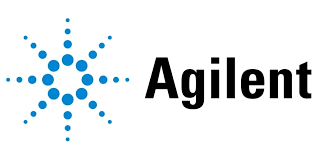Ai In Uavs
Published Date: 28 October 2025 | Report Code: ai-in-uavs
Ai In Uavs Market Size, Share, Industry Trends and Forecast to 2033
This report provides an in‐depth analysis of the Ai In UAVs market, offering insights on market trends, technological innovations, and key growth drivers for the forecast period 2024 to 2033. The report outlines market size, CAGR, segmentation, regional analysis, and profiles global market leaders, ensuring a comprehensive understanding of evolving industry dynamics.
| Metric | Value |
|---|---|
| Study Period | 2024 - 2033 |
| 2024 Market Size | $3.50 Billion |
| CAGR (2024-2033) | 12.8% |
| 2033 Market Size | $10.86 Billion |
| Top Companies | AeroVision Technologies, SkyNet Innovations |
| Last Modified Date | 28 October 2025 |
Ai In Uavs Market Overview
Customize Ai In Uavs market research report
- ✔ Get in-depth analysis of Ai In Uavs market size, growth, and forecasts.
- ✔ Understand Ai In Uavs's regional dynamics and industry-specific trends.
- ✔ Identify potential applications, end-user demand, and growth segments in Ai In Uavs
What is the Market Size & CAGR of Ai In Uavs market in 2024?
Ai In Uavs Industry Analysis
Ai In Uavs Market Segmentation and Scope
Tell us your focus area and get a customized research report.
Ai In Uavs Market Analysis Report by Region
Europe Ai In Uavs:
Europe is projected to witness healthy growth in the Ai In UAVs market, with figures increasing from 1.06 billion in 2024 to an estimated 3.29 billion in 2033. The region is noted for its stringent regulatory standards and commitment to technological advancement. European countries are investing in R&D and forging strategic alliances, thereby ensuring that the market remains competitive and innovative. The progressive adoption of AI in UAVs for surveillance, mapping, and critical infrastructure applications further reinforces this upward trend.Asia Pacific Ai In Uavs:
In the Asia Pacific region, the market is witnessing a significant transformation fueled by rapid technological adoption and increasing investments in UAV infrastructure. With market figures growing from a base of 0.64 billion in 2024 to an anticipated 1.99 billion in 2033, countries in this region are focusing on leveraging AI to enhance operational efficiency in various sectors, including agriculture, surveillance, and disaster management. Continued government support and strategic industry collaborations are expected to catalyze further growth in this dynamic market.North America Ai In Uavs:
North America remains a leading region for the adoption of AI in UAVs, with market estimates rising from 1.28 billion in 2024 to an expected 3.98 billion in 2033. The region benefits from a robust technological ecosystem, strong R&D frameworks, and significant investments in innovation. Government initiatives coupled with a high degree of industrial digitization support continuous market growth, positioning North America as a key hub for UAV technology integration.South America Ai In Uavs:
The South American market, though currently modest with a starting figure of 0.03 billion in 2024, is projected to grow to 0.11 billion by 2033. This growth is driven by increasing awareness about the benefits of AI-enabled UAVs and emerging applications in agriculture and infrastructure inspection. Investments in technology adoption and government initiatives aimed at modernizing UAV operations are gradually paving the way for market expansion in this region.Middle East & Africa Ai In Uavs:
In the Middle East and Africa, the market is steadily evolving with an expected rise from 0.48 billion in 2024 to 1.49 billion by 2033. This region is focusing on leveraging AI-enabled UAVs to address security, surveillance, and infrastructure challenges. Although market penetration is currently at an early stage, growing investments in technology and supportive government policies are anticipated to accelerate market adoption in the coming years.Tell us your focus area and get a customized research report.
Ai In Uavs Market Analysis By Technology
Global AI in UAVs Market, By Technology Market Analysis (2024 - 2033)
The by-technology segment of the market focuses on the integration of advanced computational techniques such as computer vision, machine learning, and sensor fusion. These technologies are central to enhancing UAV navigation, object detection, and overall mission-specific performance. With computer vision driving over two-thirds of the market share and significant investments in machine learning, this segment is expected to remain a catalyst for innovation. The ongoing development in sensor fusion technologies further ensures that UAVs can operate with improved accuracy in diverse environmental conditions, thereby reinforcing the market’s overall growth trajectory.
Ai In Uavs Market Analysis By Application
Global AI in UAVs Market, By Application Market Analysis (2024 - 2033)
The by-application analysis spans a range of end-use sectors including commercial, government, industrial, scientific research, and entertainment & media. Each of these applications leverages AI-enabled UAVs differently to enhance operational efficiency and deliver precise outcomes. The commercial sector, commanding nearly half of the overall market share, utilizes UAVs for tasks such as aerial photography, delivery services, and surveying. Similarly, government and industrial applications benefit from real-time data processing and enhanced situational awareness. Overall, the cross-sector adoption of innovative UAV applications underscores the extensive potential and diverse utility of AI technologies in this space.
Ai In Uavs Market Analysis By Platform
Global AI in UAVs Market, By Platform Market Analysis (2024 - 2033)
The platform-based segmentation examines the performance and market dynamics of Fixed Wing, Rotary Wing, and Hybrid UAVs. Fixed Wing UAVs currently dominate, offering superior flight endurance and operational efficiency, which is critical in applications demanding long-duration missions. Rotary Wing and Hybrid platforms, although smaller in market share, are gaining traction due to their maneuverability and ability to operate in confined spaces. These platforms are evolving with significant technological enhancements, ensuring that they can cater to both niche applications and broader operational requirements, thereby diversifying the overall market portfolio.
Ai In Uavs Market Analysis By End User
Global AI in UAVs Market, By End-User Market Analysis (2024 - 2033)
Analyzing the market by end-user reveals the diverse industries that benefit from AI-enabled UAV technology. End-user segments include agriculture, infrastructure inspection, transportation and logistics, defense and security, as well as mapping and survey. In agriculture, UAVs enhance precision farming and crop monitoring techniques, while in transportation and logistics, they streamline supply chain processes. Defense and security applications are becoming increasingly sophisticated with real-time surveillance and threat detection capabilities. Overall, this segmentation highlights how various industries are leveraging AI integration in UAVs to drive operational efficiencies, reduce costs, and improve decision-making processes.
Ai In UAVs Market Trends and Future Forecast
Tell us your focus area and get a customized research report.
Global Market Leaders and Top Companies in Ai In Uavs Industry
AeroVision Technologies:
AeroVision Technologies is at the forefront of integrating advanced AI solutions into UAV systems. The company is renowned for its innovative approach to autonomous flight and real-time data analytics, delivering high-performance UAV systems across defense, commercial, and industrial sectors.SkyNet Innovations:
SkyNet Innovations has established itself as a global leader by developing cutting-edge UAV platforms that employ state-of-the-art computer vision and machine learning algorithms. Its commitment to research and development has positioned the company as a key player in driving the evolution of AI-powered unmanned systems.We're grateful to work with incredible clients.









FAQs
What is the market size of Ai in UAVs?
The Ai in UAVs market is projected to reach $3.5 billion by 2033, exhibiting a significant CAGR of 12.8%. This growth reflects increased adoption of artificial intelligence technologies across various regions and industry sectors.
What are the key market players or companies in this Ai in UAVs industry?
The key market players in the Ai in UAVs industry include major technology firms and UAV manufacturers that are integrating AI solutions, focusing on enhancing operational efficiency and expanding application ranges across sectors such as agriculture, defense, and logistics.
What are the primary factors driving the growth in the Ai in UAVs industry?
The growth in the Ai in UAVs industry is primarily driven by advancements in AI technology, increasing demand for drone applications in agriculture and logistics, and regulatory support, which encourages safe and efficient drone operations.
Which region is the fastest Growing in the Ai in UAVs?
North America is the fastest-growing region in the Ai in UAVs market, projected to grow from $1.28 billion in 2024 to $3.98 billion by 2033. This growth is mainly fueled by high adoption rates and ongoing technological advancements.
Does ConsaInsights provide customized market report data for the Ai in UAVs industry?
Yes, ConsaInsights offers customized market report data for the Ai in UAVs industry, allowing clients to tailor insights based on specific parameters like geographical focus, market segments, and competitive dynamics to better inform their strategic decisions.
What deliverables can I expect from this Ai in UAVs market research project?
From the Ai in UAVs market research project, you can expect deliverables such as detailed market analysis reports, segment-wise data insights, competitive landscape evaluations, and region-specific growth forecasts to guide strategic planning.
What are the market trends of Ai in UAVs?
Key market trends in Ai in UAVs include increasing integration of AI with UAVs for better analytics, a rise in autonomous operations, applications in environmental monitoring, and enhanced security features bolstered by machine learning and sensor fusion technologies.

